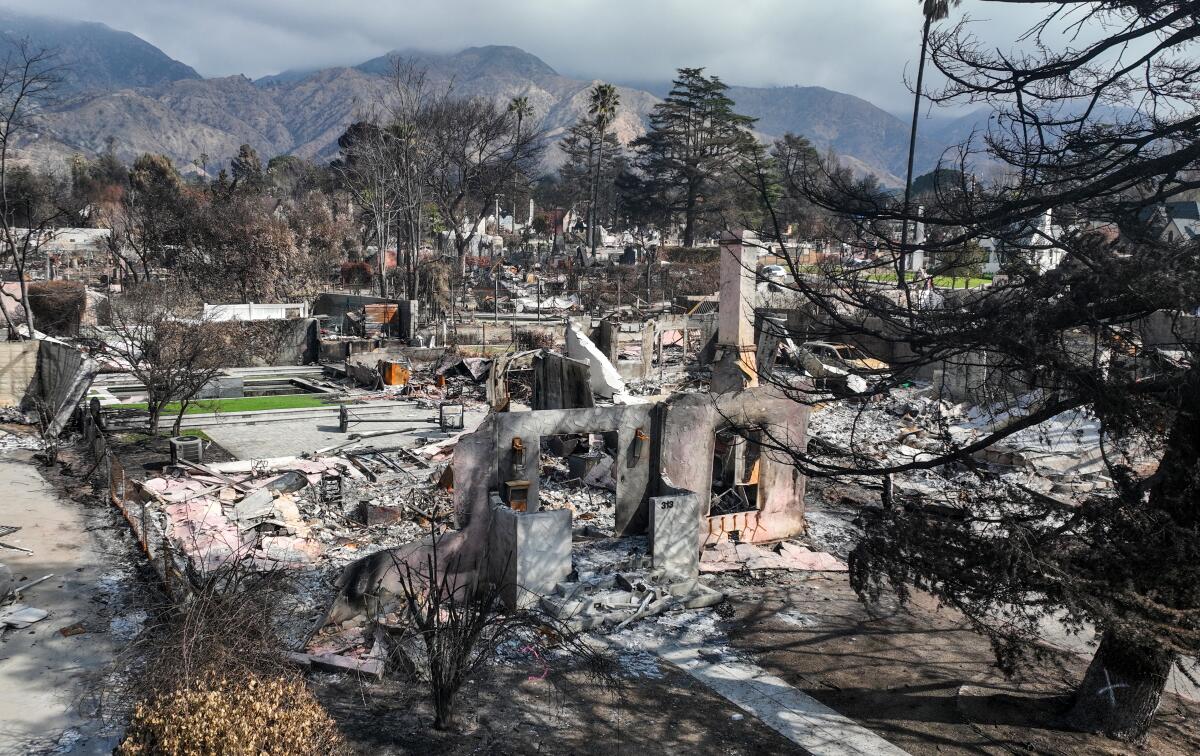Table of Contents
- Navigating the Digital Divide: LAUSD’s Cellphone Ban and Its Impact
- Key Developments Shaping California: From Wildfire Prevention to Border Dynamics
- The Debate Over Cellphone Bans in Schools: are They Effective?
- Edison’s Fire Prevention Spending: A Rising cost with Questionable Results
- Concerns Over Potential Cuts to HIV Prevention Programs
- California-Mexico Border: A Shift in Migration Patterns
- Spotlight on Gregory Nava’s Cinematic Contributions
- The Enduring Legacy of “Selena”: A Look Back with Gregory Nava
- A Head-Shaving Stand Against Childhood Cancer: LAPD and Community rally
- Exploring Future Trends in Education, Technology, and Cultural Depiction
A look into the Los Angeles Unified School District’s recent cellphone ban, exploring both its perceived benefits and the creative workarounds devised by students.
The Analog Past vs. the Digital Present: A Generational Shift
For those who attended middle and high school before the ubiquity of smartphones, classroom distractions were a decidedly low-tech affair. Think surreptitious note-passing, elaborate doodles consuming notebook pages, hushed conversations, or even the classic pencil-toss aimed at the ceiling tiles.
The landscape has drastically changed. Today’s teens have grown up in a world saturated with pocket-sized devices offering instant access to facts, entertainment, and social connection. This reality makes the recent move by the Los Angeles Unified School District (LAUSD) all the more notable.
LAUSD Implements Cellphone Restrictions: A District-Wide Initiative
In a bid to curb distractions and foster a more focused learning habitat, the Los angeles Unified school District (LAUSD), the second-largest in the nation, implemented a cellphone ban across approximately 800 campuses. the policy, which took effect in mid-Febuary
, relies heavily on Yondr pouches – magnetically sealed cases that students use to secure their phones during the school day. Yondr, a company known for its use at concerts and movie premieres, aims to create phone-free spaces.

Early Observations: A Mixed Bag of Results
While the initiative is still relatively new, initial feedback from teachers, administrators, and some students suggests a potential shift in the classroom dynamic. Some educators are eager about the change. One school staff member stated it was the best thing to happen to education “as the invention of cellphones.”
The rationale behind the ban extends beyond mere distraction. As noted, “Amid the roll-out, [teachers and administrators] have cited anecdotal evidence and data that show the negative health effects of unfettered access to smartphones, which have contributed to an increase in anxiety, depression and other issues for students, especially as the COVID-19 pandemic.”
This highlights concerns about the potential impact of constant connectivity on student well-being.
Echoing this sentiment,LAUSD school board member Nick Melvoin reported positive changes,stating that school psychologists have observed a decrease in fights and drug-related incidents sence the implementation of the ban. Furthermore, some students have expressed feeling more engaged in their classes.
One such student, Angie Mendoza, a senior at University High School Charter, shared her experience with Melvoin during a school visit: “Sometimes the lectures can be a little boring, and you have that urge to scroll on TikTok or Instagram, but that’s not the best habit. I’ve been getting better grades because I’ve been paying more attention in class.”
This personal anecdote underscores the potential for improved academic focus when digital distractions are minimized.
The Resistance: Students find Creative Loopholes
Despite the perceived benefits, not all students are on board with the cellphone ban. some have become quite resourceful in finding ways to circumvent the rules. These methods range from using decoy phones to physically manipulating the Yondr pouches.

Madison Thacker, a senior at Van Nuys High School’s Performing Arts Magnet, revealed the extent of the resistance, stating, “As of today, I don’t know anybody who has put their phones into a pouch.Kids are putting in old phones, they are putting in burner phones, they are putting in battery packs. And most popular: calculators.”
This suggests that a significant number of students are actively seeking ways to maintain access to their devices during school hours.
Beyond using substitutes, some students have reportedly discovered methods to unlock the pouches themselves, employing magnets, pencils, or even brute force. This ingenuity highlights the challenges of enforcing a blanket ban in the face of steadfast opposition.
The broader Debate: Are Cellphone Bans the Answer?
The LAUSD’s initiative is part of a larger national conversation about the role of cellphones in schools. According to a recent study by Common Sense Media, teenagers spend an average of over seven hours per day on screens for entertainment, excluding schoolwork. This statistic underscores the pervasiveness of digital media in young people’s lives and the potential for distraction in the classroom.
A Pew Research Center study indicates that a majority of U.S. teachers agree that cellphone-based distractions pose a major problem in classrooms.
Though, the effectiveness and appropriateness of blanket bans remain a subject of debate.
Some argue that such bans are overly restrictive and fail to address the underlying issues, such as addictive social media platforms
and less-than-engaging teaching methods. Critics suggest that schools should focus on teaching students responsible technology use and creating more stimulating learning environments.
Furthermore, research on the impact of cellphone bans on student outcomes is mixed and limited.
This lack of conclusive evidence makes it difficult to definitively assess the long-term effects of such policies.
Key Developments Shaping California: From Wildfire Prevention to Border Dynamics
A look at the critical issues impacting california,including wildfire management,healthcare access,and shifts in border security.
The Debate Over Cellphone Bans in Schools: are They Effective?
The implementation of cellphone bans in schools, notably in districts like LAUSD, has sparked considerable debate.While proponents argue that these bans improve student focus and mental wellbeing, recent research suggests a more nuanced reality. Some schools are using Yondr pouches to enforce these bans.
A study published just last month challenges the assumption that restricting phone use directly translates to better mental health outcomes for adolescents. The study found no evidence that restrictive school policies are associated with overall phone and social media use or better mental wellbeing in adolescents.
This raises questions about the effectiveness of such policies and whether alternative approaches might be more beneficial in fostering a healthy relationship with technology among students. Instead of outright bans, some experts suggest focusing on digital literacy and responsible usage.
Edison’s Fire Prevention Spending: A Rising cost with Questionable Results

Despite significant investments in wildfire prevention, Southern California Edison (Edison) continues to face scrutiny over its role in sparking fires. The financial burden of these prevention efforts is increasingly being passed on to customers,raising questions about the effectiveness of the company’s strategies.
According to recent reports, There were 178 fires sparked by Edison equipment last year, up from 107 in 2015,
despite the company’s substantial spending, including $1.9 billion in the last year alone. This increase in fire incidents, despite increased spending, has prompted investigations and calls for greater accountability.
Some officials attribute the ongoing issues to a 2019 state law that limited the financial liability of utilities for wildfires they caused.This has led to a debate about whether the law inadvertently reduced the incentive for utilities to invest in robust safety measures. As California faces increasingly severe wildfire seasons, the need for effective prevention strategies and responsible utility management is more critical than ever.
Concerns Over Potential Cuts to HIV Prevention Programs
Healthcare agencies in Southern California are expressing deep concern over potential cuts to crucial HIV prevention programs. These programs are vital for testing, treatment, and education, and any reduction in funding could have severe consequences for public health.
Reports suggesting that officials are considering cuts to key programs for the prevention of HIV and AIDS have sparked outrage among major regional LGBTQ+ service organizations.
The potential impact of these cuts is particularly alarming given the progress made in recent years in reducing HIV transmission rates.
one healthcare expert emphasized the potential setback, stating, It’s a 180-degree turn, to threaten to take this away…It feels personal and it makes zero sense.
The potential cuts could undermine years of effort and put vulnerable populations at risk. Advocates are urging policymakers to reconsider these measures and prioritize the continued fight against HIV/AIDS.
California-Mexico Border: A Shift in Migration Patterns
The California-Mexico border, once overwhelmed with migrants, is now experiencing a significant decrease in arrivals.This shift has had a ripple effect on shelters, nonprofits, and border patrol operations.
As The Times’ Andrea Castillo reports, Shelters that once received migrants have closed, makeshift camps where migrants waited for processing are barren, and nonprofits have begun shifting their services to established immigrants in the U.S. who are facing deportation, or migrants stuck in southern mexico.
This conversion reflects a change in migration patterns and border enforcement strategies.
The increased presence of U.S. military troops,with 750 personnel dispatched to the San Diego area,has contributed to the decline in migrant arrivals.While the situation remains fluid, the current state of the California-Mexico border represents a notable departure from the challenges faced in recent years.

Gregory Nava, a prominent figure in Hollywood, has left an indelible mark on the film industry with his compelling storytelling and dedication to portraying Latino experiences. His work has not onyl entertained audiences but also provided a platform for underrepresented voices.
Published: [Current Date]

A Cinematic Tribute to a Tejano Icon
The 1997 film “Selena,” starring Jennifer Lopez, remains a powerful and poignant portrayal of the life and legacy of Selena Quintanilla-Pérez, the “Queen of Tejano Music.” Following her tragic death, Selena’s family entrusted director Gregory Nava with the responsibility of bringing her story to the big screen. This decision underscored the importance of cultural understanding and authentic depiction in filmmaking.
The film’s enduring appeal lies not only in its captivating narrative but also in its ability to resonate with audiences across generations. It serves as a testament to Selena’s lasting impact on music, fashion, and popular culture. As of 2023, Selena’s music continues to be streamed millions of times annually, demonstrating her unwavering popularity.
The Director’s Outlook: Cultural Authenticity
Nava’s selection as director was deeply rooted in the family’s desire for a filmmaker who could authentically capture Selena’s world. He shared his insights on the importance of cultural understanding in filmmaking:
Selena’s family felt very strongly that only a Latino filmmaker would be able to understand the culture, her ethos and the world she came from.
this emphasis on cultural authenticity highlights the significance of diverse voices in storytelling. Just as Ava DuVernay brought a unique perspective to “Selma,” Nava’s background allowed him to approach “Selena” with a deep understanding of the Tejano culture and its influence on Selena’s life and music.
Beyond Entertainment: A Cultural Touchstone
The film “Selena” transcends mere entertainment; it has become a cultural touchstone for the Latino community and beyond. It celebrates the values of family, hard work, and pursuing one’s dreams, themes that resonate universally. The film’s success also paved the way for greater representation of latino actors and stories in Hollywood.
Consider the impact of Lin-Manuel Miranda’s “In the Heights,” which, like “Selena,” brought a vibrant Latino story to a wider audience.These films not only entertain but also educate and inspire, fostering a greater understanding and thankfulness of diverse cultures.
Continuing the Conversation
The legacy of Selena Quintanilla-Pérez continues to inspire artists and fans alike. Her story, as told through Nava’s film, serves as a reminder of the power of music, the importance of cultural representation, and the enduring impact of a life lived with passion and purpose.
Photo of the Day

A Head-Shaving Stand Against Childhood Cancer: LAPD and Community rally
Los Angeles community members, including police and fire departments, demonstrated their support for children battling cancer at the 22nd annual St. Baldrick’s fundraiser.
A Visual Testament to Compassion

St. Baldrick’s: More Than Just a Haircut
The St. Baldrick’s Foundation, a non-profit association, has been a driving force in raising funds for childhood cancer research. Events like the one in Los angeles are crucial for generating awareness and financial support. According to the National Cancer Institute, cancer remains the leading cause of death by disease among children in the United States. Fundraisers like St. Baldrick’s are vital in changing this statistic.
the act of shaving one’s head symbolizes solidarity with children undergoing cancer treatment, many of whom experience hair loss as a side effect of chemotherapy. It’s a powerful visual statement of support and empathy.
Consider this analogy: Imagine a marathon where runners shave their heads to show support for a specific cause. The shaved head becomes a symbol of unity and shared purpose, just like wearing a ribbon or a team jersey.
Community Bonds Forged in Support
The participation of the Los Angeles Police and Fire Departments highlights the strong connection between law enforcement,emergency services,and the communities they serve. Their involvement sends a message of hope and resilience to children and families affected by cancer.
The event underscores the importance of community involvement in addressing critical health issues. It demonstrates that even seemingly small acts of solidarity can have a significant impact on the lives of others.
The Enduring Impact of Collective Action
Events like the St. Baldrick’s fundraiser serve as a reminder that collective action can make a tangible difference in the fight against childhood cancer. by raising funds and awareness, these events contribute to advancements in research, treatment, and support services for children and their families.
Here are two relevant PAA questions for the provided article, each on a new line:
Exploring Future Trends in Education, Technology, and Cultural Depiction
Analyzing the evolving landscape of school policies, digital device usage, and the enduring impact of cultural narratives.
The Evolution of School Policies: Balancing Technology and Learning
In recent years, educational institutions have grappled with integrating technology into classrooms while mitigating potential distractions. The Los Angeles Unified School District (LAUSD) implemented a district-wide cellphone ban in February 2025, aiming to enhance student focus and address mental health concerns associated with excessive screen time. this initiative aligns with California’s broader legislative efforts to regulate smartphone use in schools, with a state law mandating such policies by July 1, 2026. ([reuters.com](https://www.reuters.com/world/us/california-passes-law-ban-or-restrict-smartphones-school-2024-09-24/?utm_source=openai))
Anticipated Developments
As these policies take effect, we can expect a shift towards more structured digital usage in educational settings. Schools may adopt hybrid models, integrating technology in controlled environments to support learning objectives. Additionally, there will likely be an increased emphasis on digital literacy programs to equip students with the skills to navigate the digital world responsibly.
Real-Life Exmaple
In 2024, the San Francisco Unified School District implemented a policy permitting phones on campus but restricting their use during instructional time. This approach aims to balance the benefits of technology with the need for focused learning. ([axios.com](https://www.axios.com/newsletters/axios-san-francisco-09dfa5c0-a8df-11ef-8961-b3f1444dec08?utm_source=openai))
The proliferation of smartphones has raised concerns about their impact on student mental health and academic performance. Studies have linked excessive screen time to increased anxiety and depression among adolescents. In response, educational policies are evolving to address these challenges. ([reuters.com](https://www.reuters.com/world/us/california-passes-law-ban-or-restrict-smartphones-school-2024-09-24/?utm_source=openai))
Anticipated Developments
Future trends may include the growth of complete digital wellness programs within schools, focusing on educating students about healthy technology use. Schools might also collaborate with tech companies to create educational tools that promote well-being. Moreover, there could be a rise in research exploring the long-term effects of digital device usage on youth development.
Real-Life Example
The California Phone-Free Schools Act, signed into law in September 2024, requires school districts to establish policies restricting student smartphone use by July 1, 2026. This legislation reflects a proactive approach to mitigating the adverse effects of digital device overuse on student health. ([reuters.com](https://www.reuters.com/world/us/california-passes-law-ban-or-restrict-smartphones-school-2024-09-24/?utm_source=openai))
Cultural Representation in Media: The Legacy of “Selena”
The 1997 film “Selena,” directed by Gregory Nava, continues to be a significant cultural touchstone, highlighting the life and impact of Tejano music icon Selena Quintanilla-Pérez. The film’s enduring popularity underscores the importance of authentic cultural representation in media. ([goldenglobes.com](https://goldenglobes.com/articles/gregory-nava-selenas-movie-has-been-biggest-success-my-career/?utm_source=openai))
Anticipated Developments
The success of “Selena” may inspire a new wave of biographical films focusing on underrepresented cultural figures, emphasizing the value of diverse narratives in mainstream media. Additionally, there could be a growing trend towards inclusive storytelling that authentically portrays various cultural experiences.
Real-Life Example
Director Gregory Nava reflects on the film’s impact, stating, “I think the movie is more popular now than it was 25 years ago. The great success of this movie is due to the majestic spirit of a young woman who left us very early and her name is Selena.” ([goldenglobes.com](https://goldenglobes.com/articles/gregory-nava-selenas-movie-has-been-biggest-success-my-career/?utm_source=openai))
Frequently Asked Questions (FAQ)
- What is the California Phone-Free Schools Act?
- The California Phone-Free Schools Act is legislation signed into law in September 2024, requiring school districts to establish policies restricting student smartphone use by July 1, 2026. ([reuters.com](https://www.reuters.com/world/us/california-passes-law-ban-or-restrict-smartphones-school-2024-09-24/?utm_source=openai))
- How has the film “Selena” influenced cultural representation in media?
- The film “Selena,” directed by Gregory Nava, has been a significant cultural touchstone, highlighting the life and impact of Tejano music icon Selena Quintanilla-Pérez. ([goldenglobes.com](https://goldenglobes.com/articles/gregory-nava-selenas-movie-has-been-biggest-success-my-career/?utm_source=openai))
- What are the potential benefits of restricting smartphone use in schools?
- Restricting smartphone use in schools aims to reduce distractions, improve student focus, and address mental health concerns associated with excessive screen time. ([reuters.com](https://www.reuters.com/world/us/california-passes-law-ban-or-restrict-smartphones-school-2024-09-24/?utm_source=openai))
Interactive Elements
Did you know? The California Phone-Free Schools Act requires school districts to establish policies restricting student smartphone use by July 1, 2026. ([reuters.com](https://www.reuters.com/world/us/california-passes-law-ban-or-restrict-smartphones-school-2024-09-24/?utm_source=openai))
Pro Tip: When discussing the impact of digital devices on education, consider exploring both the benefits and challenges to provide a balanced perspective.
Reader Question: How do you think restricting smartphone use in schools will affect student learning and social interactions? Share your thoughts in the comments below.
Call to Action
Stay informed about the evolving landscape of education and technology. Subscribe to our newsletter for the latest updates and in-depth analyses on these critical topics.
